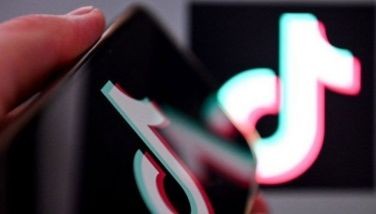Government decides to exercise put option on PAL
May 6, 2002 | 12:00am
The Philippine National Bank (PNB) has decided to exercise its put option on Philippine Airlines (PAL).
PNB announced the decision of its board of directors shortly after the government disclosed that it was exercising its own put option in PAL, a move that would force Tan to cough up P2 billion to honor the deal.
If PAL is unable to produce enough cash, the obligation will be assumed by PAL’s two main guarantors: Asia Brewery and Fortune Tobacco, the flagship companies of the Tan Group.
Tan owns the controlling interest in PAL and PNB but PNB chairman Francisco Dizon was quick to allay fears that there was conflict of interests when the bank made its decision
"The PAL board decided that it would be to our advantage to exercise our put option," Dizon said.
According to Dizon, PNB is not including itself in the consolidated position of the government and the four government financial institutions since PNB is no longer a government owned bank.
Last week, the National Government together with the Development Bank of the Philippines, the Land Bank, the Government Service Insurance System, and the AFP-Retirement Service Benefits System disclosed that they were preparing to serve a demand letter to PAL informing the airline that they were exercising their put option.
The GFIs and Tan signed a put-option agreement in April 1996 requiring the latter to buy their shares back at P5 each after six years. The put-option agreement was a compromise reached by the two parties in December 1995 when the PAL board agreed to require existing shareholders to raise P3.4 billion in fresh capital to finance an ambitious re-fleeting program.
PNB and the state-run financial groups decided not to exercise their pre-emptive rights to the capital call. In exchange for waiving their rights, they asked Tan to enter into a put-option would mature this month.
The banks and the NG shares put together add up to P2 billion which will be split according to their remaining shareholdings in the country’s flag carrier.
At present, PAL is 53.79 percent owned by Tan while the government has been whittled down to 4.26 percent. PAL employees own up to 2.61 percent while 35.15 percent is owned by four Tan-controlled firms, namely: Top Wealth Equities, Maxell Holdings and Richmark Holdings. About 4.19 percent is owned by other investors.
Although its performance has improved since it went under receivership, PAL is still a long way from being out of the woods as it reported losses of P1.6 billion to P1.8 billion during its fiscal year ended March 2002, although this is better than the original projected loss of P2.7 billion for the period.
But PNB is also under pressure to make money as soon as possible, especially after it finally reached an agreement with the government for the settlement of its P25-billion emergency loan.
Under a new management team responsible for drawing up its rehabilitation plan, PNB is expected to turn around within five years.
PNB announced the decision of its board of directors shortly after the government disclosed that it was exercising its own put option in PAL, a move that would force Tan to cough up P2 billion to honor the deal.
If PAL is unable to produce enough cash, the obligation will be assumed by PAL’s two main guarantors: Asia Brewery and Fortune Tobacco, the flagship companies of the Tan Group.
Tan owns the controlling interest in PAL and PNB but PNB chairman Francisco Dizon was quick to allay fears that there was conflict of interests when the bank made its decision
"The PAL board decided that it would be to our advantage to exercise our put option," Dizon said.
According to Dizon, PNB is not including itself in the consolidated position of the government and the four government financial institutions since PNB is no longer a government owned bank.
Last week, the National Government together with the Development Bank of the Philippines, the Land Bank, the Government Service Insurance System, and the AFP-Retirement Service Benefits System disclosed that they were preparing to serve a demand letter to PAL informing the airline that they were exercising their put option.
The GFIs and Tan signed a put-option agreement in April 1996 requiring the latter to buy their shares back at P5 each after six years. The put-option agreement was a compromise reached by the two parties in December 1995 when the PAL board agreed to require existing shareholders to raise P3.4 billion in fresh capital to finance an ambitious re-fleeting program.
PNB and the state-run financial groups decided not to exercise their pre-emptive rights to the capital call. In exchange for waiving their rights, they asked Tan to enter into a put-option would mature this month.
The banks and the NG shares put together add up to P2 billion which will be split according to their remaining shareholdings in the country’s flag carrier.
At present, PAL is 53.79 percent owned by Tan while the government has been whittled down to 4.26 percent. PAL employees own up to 2.61 percent while 35.15 percent is owned by four Tan-controlled firms, namely: Top Wealth Equities, Maxell Holdings and Richmark Holdings. About 4.19 percent is owned by other investors.
Although its performance has improved since it went under receivership, PAL is still a long way from being out of the woods as it reported losses of P1.6 billion to P1.8 billion during its fiscal year ended March 2002, although this is better than the original projected loss of P2.7 billion for the period.
But PNB is also under pressure to make money as soon as possible, especially after it finally reached an agreement with the government for the settlement of its P25-billion emergency loan.
Under a new management team responsible for drawing up its rehabilitation plan, PNB is expected to turn around within five years.
BrandSpace Articles
<
>
- Latest
- Trending
Trending
Latest





























